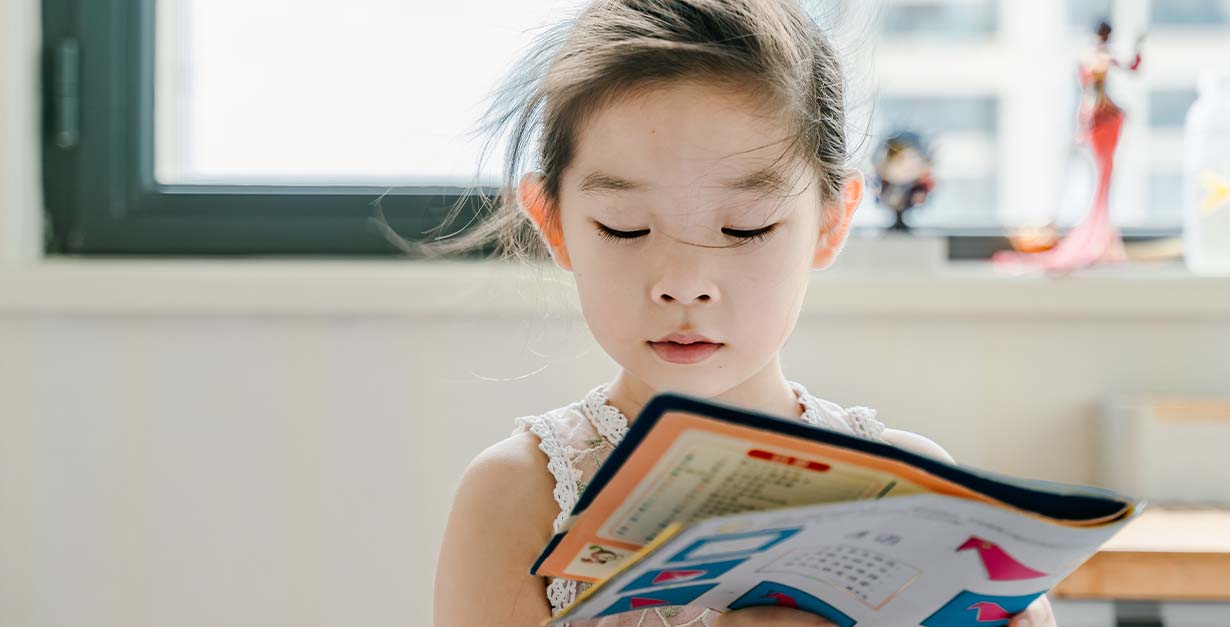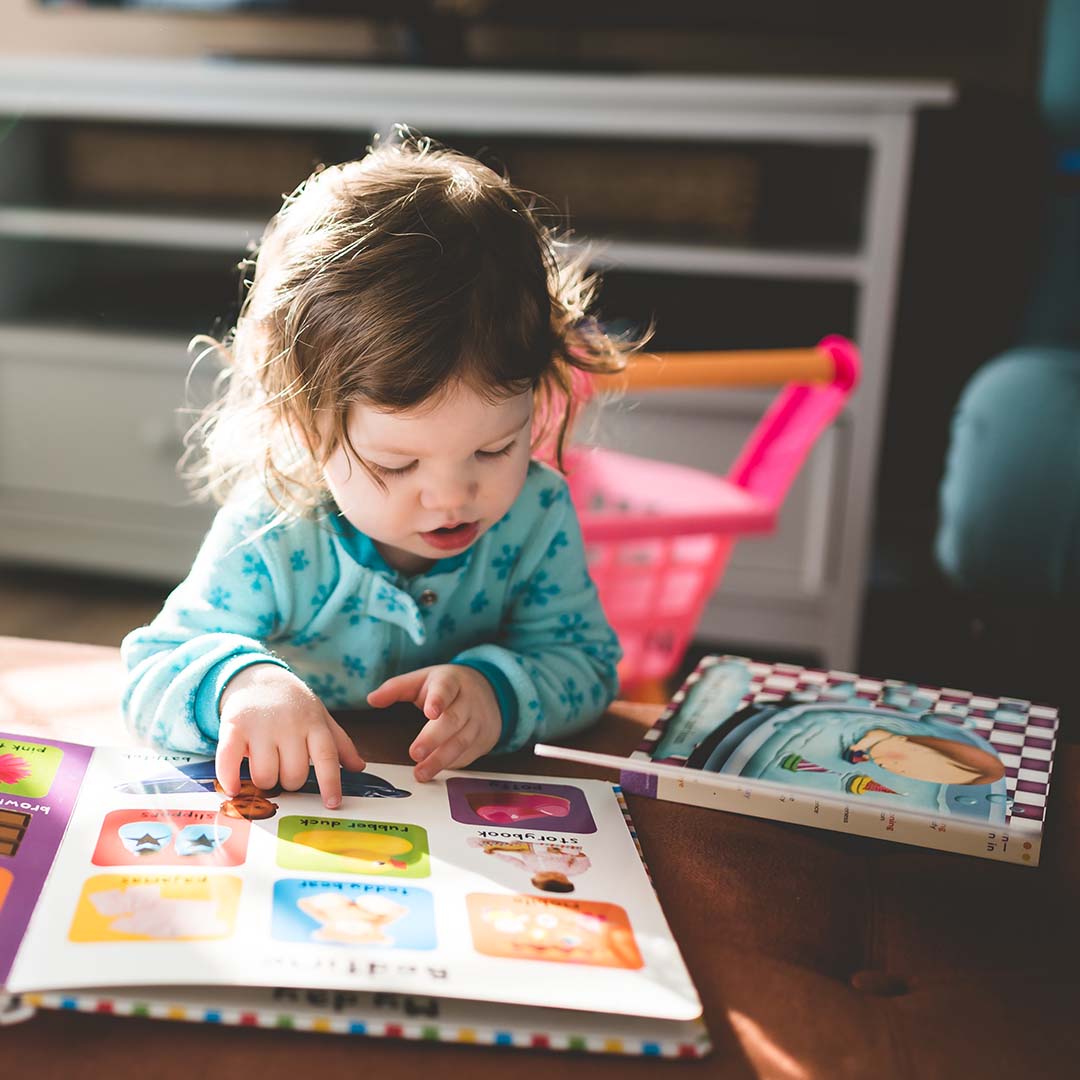The world is getting back to a new normal, but some of us are still staying close to home. If you have established some reading routines at home during the last year, you know that it’s helped bring a sense of calm to your home. If you haven’t, there’s no time like the present to start reading daily with your children of all ages. From babies to grade-school kids, we’ve collected some expert advice along with some great ideas to make reading routines fun and calming in your home.
Experts Recommend Storytelling Rituals and Reading Routines
Dr. Dianne Gerard Ph.D. helped many people on Kauai regain their perspective and sense of safety by recommending rituals following Hurricane Iniki. She expressed that people remember their reading routines and bedtime rituals into adulthood. Books and story time is a calming activity that can make babies and children feel comforted and reassured.
You don’t have to be a Ph.D. to know how much better your own kids do on some kind of schedule. Don’t feel like making your own? Print this one and tape it to the fridge — it includes your naps and appropriate bedtime.
Need some more information about schedules and routines?
Read: Sample Schedules: Sleep and Naps From 6 Months to Preschool
Reading Isn’t Just for Bedtime
You’ve heard of bedtime stories, but what about naptime stories? After all, the same calming effect of hearing a story at bedtime works at naptime, too.
For those children who have outgrown naps, and even those who read, how about a quiet time story? Reading together is still a great way to connect with your children in a calm, screen-free way. Establishing reading routines at home at any age will create memories they’ll cherish forever.
When naps evaporate, try quiet time!
Make a Reading “Nook”
Right now, with what you have in your home, you can create a “reading nook” to help everyone get in the mood.
Find an empty spot in your house, pile in some pillows and a big cozy blanket. Kids LOVE forts, so call it a “reading fort”, “book castle”, or whatever it takes. You know your little ones, and you know what makes them tick.
It’s OK to Read it Twice or More
We’ve all read that one book so many times, it plays on repeat in your head as you try to drift off. But just because you can’t fathom one more repeat of “Goodnight Moon” doesn’t mean there isn’t some good in repetition.
During trying times, kids will cling to the familiar. Reading a book you’ve read repeatedly might go a long way to make them feel like everything is “situation normal”. We may not know what’s going to happen tomorrow or in a week, but we do know that bowl of mush is going to be on that table every single time!
Repetition in your reading routines also helps kids develop deeper understanding, character development, and even recognize the details in the illustrations. After all, it can take a few times through to see the toy elephant on the bottom shelf in the room, or wonder about who decorated everything in those garish colors! Many times, reading a familiar book will create spinoff discussions and ideas. Kids have amazing imaginations!
Establishing Reading Routines with Shared Reading
If you have a reader in your home, they can practice with you. Schools don’t do as many “read-alouds” with kids as they used to, and many kids don’t feel comfortable reading in front of an entire group. At home, in their cozy nook, with mom or dad, they might be willing to share the task of reading.
At the same time, just because your child CAN read, doesn’t mean they won’t benefit from being read to. The sound of your voice, the inflections an experienced reader brings, and the calming task of listening can take stress off of their little shoulders.
Want to read more about bedtime routines?
Read: Bedtime Routine for Toddlers — Soothing and Predictable
What Can Add to the Home Reading Experience?
You’ve read Goodnight Moon again. Your three-year-old has pointed out every detail down to how many rows the “old lady whispering hush” has knitted in her chair. How about an art project? With limited supplies and ability, you can delight your preschooler. Sketch a moon and sky and give him a box of crayons. Challenge him to add his own “stars” and whatever his heart desires. After all, with “adult coloring” recently made popular as a calming activity, coloring is a form of meditation for some.
Kim remembers doing projects like this with her girls:
“After we read The Paper Princess…the next day we got out paper, crayons, and colored pencils, and made our own paper princesses and then followed up with accessories (clothes, a bed etc)! Later we end up giving this “kit” to their friends for their birthdays!
Kids are Natural Bookworms
The tiniest of babies will respond when they hear their parents’ voices. After all, they have been hearing them since before they entered the world. For very young children, picture books are an excellent way to engage their senses without overstimulation. In fact, they can create a sense of calm at bedtime and all day long with reading routines.
From The Sleep Lady’s Good Night, Sleep Tight 3rd Edition:
“As you turn the pages of Are You My Mother? for the umpteenth time, you wonder how your baby cannot be tired of this book yet. Research shows, however, that picture books—even those ones that both you and your baby have memorized— are not just a great way to develop the brain. They do wonders for bonding and soothing, especially at bedtime.
While your baby is not actually “reading” the book, she is learning the important elements of reading—things like practicing page turning and distinguishing words. As your baby grows, you will notice she imitates your finger pointing and voice inflections as you read characters’ dialogue.
Reading books can be a great way to cue bedtime. Some parents choose to play an audiobook, turn on cartoons, or read an illustrated bedtime story—but some recent research showed that of these options, the old-fashioned book is best for developing baby’s brain. Try to avoid the e-book versions of classic childhood books, especially at bedtime and nap time, since the glow of the electronic device can disrupt sleep cycles and circadian rhythms, your child’s natural “body clock.” And swiping a tablet is not as gratifying for a child as turning a page and feeling the achievement of finishing a book, as you close the cover, saying, “The end.”
By reading picture books, you are helping your child’s neural connections and her ability to eventually learn to read all by herself. In fact, thirteen to eighteen months is the ideal age to incorporate more books into your baby’s life. They are experiencing a slow but steady growth in vocabulary and can point to pictures and recognize faces and characters. You can watch them enjoy it.
This kind of engagement, especially when it is with a family member or caregiver, also fosters a closeness and interaction beneficial to promoting nighttime security, bedtime cues, and a healthy sleepy-time routine. Parents love this bedtime story time, too. You may keep reading together for years to come.”
Want to read the whole book?
Visit: The Sleep Lady’s Good Night, Sleep Tight
What are some Great Children’s Books?
If the library is closed and passing around books with friends isn’t an option, we still have Amazon. If you’re looking to add to your home library, here are some favorites from Kim West, The Sleep Lady:
Stelluna
Verdi
Rainbow Fish
The Lonely Doll
The Lion and the Red Bird
Angelina Ballerina
Bad Case of Stripes
Streganona
The Giving Tree
Good Night Moon
Kissing Hand
Corduroy
Zen Shorts
Have no idea where to begin solving your child’s sleep issues?
Start with this guide.





